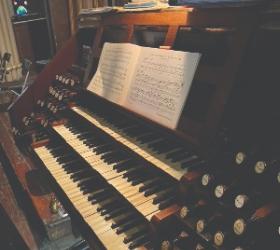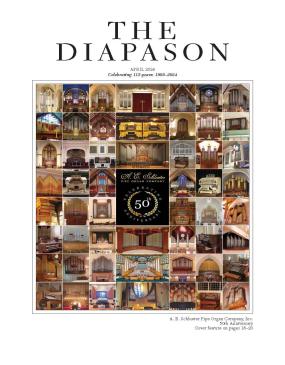
Earliest known harpsichord recording
The first publication of Wanda Landowska's 1908 Berlin cylinder recordings forms the rarest track of the compact disc included with Martin Elste's new book Milestones of Bach Interpretation [Meilensteine der Bach-Interpretation 1750-2000], (Metzler/ Bärenreiter, 2000). The great 20th-century harpsichordist committed her art to sixteen cylinders at the request of Carl Stumpf, founder of the Berlin Phonogramm-Archiv. The present disc gives us the the contents of two cylinders in a performance of the first movement of Bach's Italian Concerto, BWV 971.
So here we have documentation of the performance which led Albert Schweitzer to write, "Any one who has heard Frau Wanda Landowska play the Italian Concerto on her wonderful Pleyel clavecin finds it hard to understand how it could ever again be played on a modern piano." (Schweitzer: J. S. Bach [English translation by Ernest Newman of the 1908 German edition], v. 2, p. 353).
I wish that I could report great aural delight at hearing this historic issue, but, alas, there is almost as much surface noise as there is music to be heard here. But these near-four-minutes of harpsichordery now take pride of place as the earliest known harpsichord recordings, predating Violet Gordon Woodhouse's 1920 acoustic recordings by twelve and one-half years.
Sixteen additional musical examples serve as aural illustrations for Elste's 421-page traversal of the changing styles in Bach interpretation during the centuries since the composer's death. Schweitzer's own magisterial organ performance of Bach's Fugue in G minor (BWV 578) recorded in London in 1936, contrasts most sharply with Carl Weinrich's stringently no-nonsense contemporaneous reading of the ubiquitous Toccata and Fugue in D minor, BWV 565, recorded by Musicraft on the "Praetorius" Organ at Westminster Choir College, Princeton NJ. An absolutely dry and unforgiving acoustical enviroment makes the total accuracy of the playing seem even more astonishing!
Early music pioneer Arnold Dolmetsch's 1932 playing of the Prelude in B-flat minor (Well-Tempered Clavier, I) on the clavichord is splendid music making, complete with a wonderful improvised cadenza. Two contrasting performances of the Siciliano from the Sonata in C minor for Violin and Harpsichord, BWV 1017, showcase the art of Licco Amar and Günther Ramin (1928) and that of Alexander Schneider and Ralph Kirkpatrick (1948).
Among non-keyboard-specific examples, Alfred Cortot leads a Parisian school ensemble in a 1932 performance of the first movement of Brandenburg Concerto II (BWV 1047), treating us to an idiosyncratic lift before the entrance of the concertino, a musical view in sharp contrast to the third movement of the same concerto, led with unremitting staccato articulations, by Otto Klemperer in 1946. This conductor's work, too, is idiosyncratic (and unique) in that he employs soprano saxophone in place of the notated clarino trumpet part. Two recordings of a dramatic excerpt from the Saint Matthew Passion—the recitative describing the rending of the temple veil and and the resurrection of the saints—both employ the same Evangelist (Karl Erb) but show a marked trend toward a less romanticized aesthetic as one compares Willem Mengelberg's April 1939 rendition with the Amsterdam Concertgebouw Orchestra to a March 1941 performance conducted by Thomaskantor Günther Ramin with the Leipzig Gewandhaus Orchestra.
Elste's book is a fascinating and comprehensive contribution to the story of our changing expectations regarding the performance of earlier music. In the first part of his volume the author traces the development of historical musicology, urtext editions, the growing acceptance of harpsichords and historically-informed organs as musical media for concert performances, and details (in a ten-page, easy-to-read chart) important dates at which various "trend setters" of Bach performance in concerts and on recordings were achieved [beginning in Vienna, 1816, where the Kyrie and Gloria of the B-minor Mass were performed in houseconcerts sponsored by lawyer R. G. Kiesewetter; through such "milestones" as the first recording, in 1927, of movements from a Brandenburg Concerto with harpsichord as the keyboard instrument; and continuing to 1986, Gustav Leonhardt's first recording using a German-inspired harpsichord by William Dowd, based on the instruments of Bach's contemporary, Michael Mietke of Berlin].
In the second part of his study, Elste surveys nine decades of Bach recordings, genre by genre (vocal works, orchestral works, chamber music, works for keyboards), including an admirable number of recordings from this side of the Atlantic: among them The Haydn Society, Musicraft, Allegro, and Columbia, as well as English and German labels, some of which have been available here.
The text is, of course, in German (ISBN numbers: Metzler-Verlag: 3-476-01714-1 or Bärenreiter: 3-7618-1419-4). With its wealth of unusual black and white illustrations, its easily decipherable time lines and charts, and, especially, the fascinating compact disc of historic performances from the Bach repertoire, Martin Elste's book is a must for the connoisseur. And for the slight-of-German, it is still a desirable acquisition. Who knows? Perhaps an English edition might be hoped for in the future.
Features and news items are welcome for these columns. Send them to Dr. Larry Palmer, Division of Music, Southern Methodist University, Dallas, TX 75275, or via e-mail:




